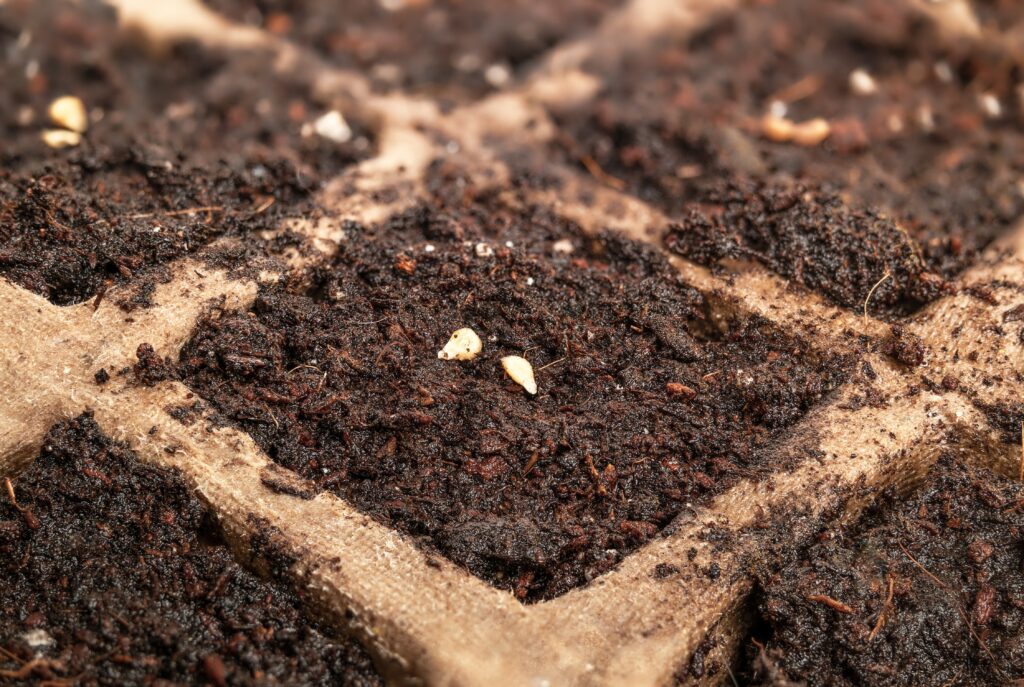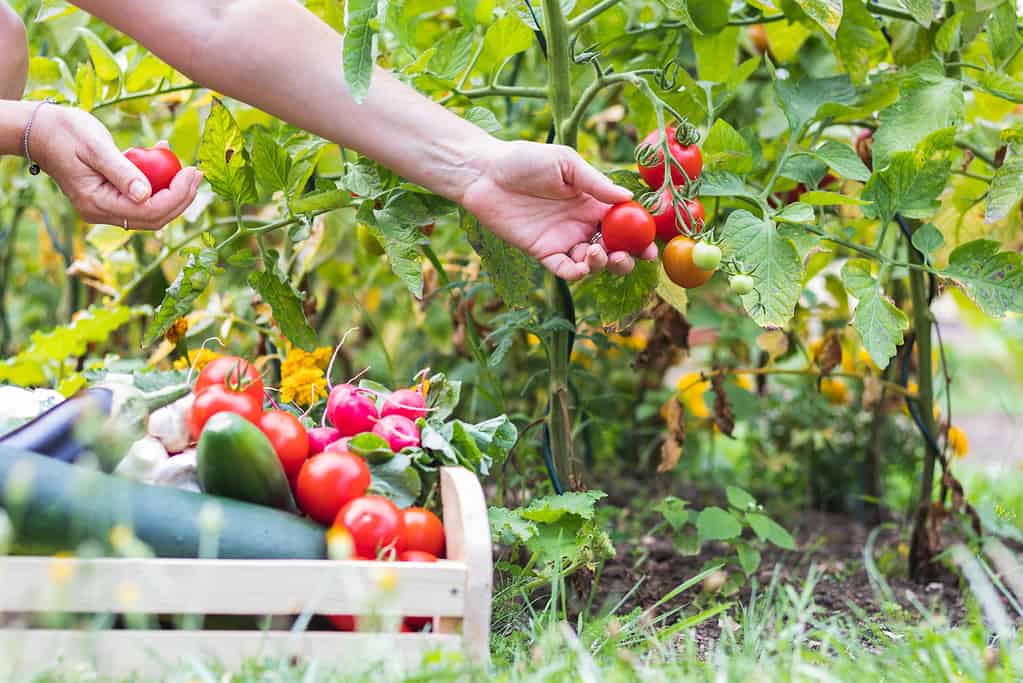You can save a lot of money gardening when you start vegetable and ornamental plants from seed rather than buying expensive potted specimens from the nursery. Starting seedlings isn’t hard, but there are steps you need to follow to have healthy plants to transplant to your garden. One of the most important steps is choosing the best soil for seed starting.
What is Seed Starting?

Home gardeners can get a jump on the growing season when they start seeds indoors.
©Ekaterina Fedulyeva/ via Getty Images
Seed starting is the process of growing plants from seeds. There are two methods of seed starting: direct sowing and indoor seed starting. Indoor seed starting is perfect for gardeners wanting to get a head start on their garden in the spring when the weather is too chilly for the seedlings to survive. It also benefits gardeners who live in areas with short growing seasons. However, some plants do not do well with indoor seed starting and grow better when planted directly into the soil.
What’s the Best Soil for Seed Starting?
If you’re starting your seeds outdoors in your garden, you can mix in manure or compost to add nutrients to the soil. Be sure to check the seed packet for growing instructions. Some plants that work well with sowing directly outside include:
- Zucchini
- Scallions
- Pole and bush beans
- Carrots
- Radishes
- Cucumbers
- Green leafy vegetables (lettuce, spinach, swiss chard)
- Turnips
There are many plants, like tomatoes, broccoli, and peppers, that need to be started indoors before transplanting to your garden. These plants require a seed starting mix that will allow small roots to spread and grow through the soil.
Seed Starting Mix Versus Potting Soil

Use cheap, plastic plant markers to keep track of your seedlings.
©sophiecat/Shutterstock.com
Seed starting mix is not the same as potting soil. Potting soil or topsoil will be denser and heavier than a seed starting mix. A seed starting blend is light with air pockets so the tender roots have a place to grow. Dense potting soil would impede the roots from expanding.
Seed starting mixes also have fewer nutrients than potting soil because seeds do not need the same level of nutrients as a growing plant. What seeds need is water, and a lot of it. Seed starting mixes should have the ability to retain moisture.
What’s in Seed Starting Mix?
Starting mixes can be bought online or from nurseries or garden stores. They contain very little actual soil but instead have ingredients such as peat moss, coconut coir, perlite, vermiculite, and rice hulls. All of these ingredients have different uses, which help the seeds to germinate and grow. Another benefit is that seed starters won’t be contaminated with pathogens or weed seeds.
Another option for buying a starting mix is making your own DIY seed starter recipe. The Oregon State University Extension Service recommends combining the following ingredients:
- One-third pasteurized soil or compost
- One-third sand, perlite, or vermiculite
- One-third of coconut coir or peat moss
8 Growing Care Tips for New Seeds

Check your seed packets for instructions on when to sow your seeds indoors.
©sophiecat/Shutterstock.com
Once you’ve got the right seed starter mix, bought your seed packets, and have your planting containers ready to go, it’s time to start planting. The following tips will help you grow healthy seedlings for transplant. You can also check out this ultimate guide for starting seeds indoors.
1: Check the instructions on your packet of seeds.
The directions on the seed packets will inform you how long you will need to grow your seeds indoors. Time that with your region’s last frost date to know when to plant your seeds.
2: Rehydrate your seed starter mix before planting.
Your seed starter will be dehydrated. Moisten it before planting your seeds to make sure you have even levels of moisture. You want it wet, but not dripping. Once you’ve added water, give it a few hours to really soak in before you start planting.
3: Keep your containers light when filling.
Don’t pack the mix into the containers, but keep them light when filling. The idea is to have soil that is fluffy and full of air pockets for roots to expand.
4: Egg cartons make great seed starting trays.
You can repurpose household items to plant your seeds such as egg cartons, yogurt containers, or toilet paper rolls. Wash them thoroughly and drill a few holes in the bottom for drainage.
5: Check the seed packet instructions for planting depth.
Some seeds, like basil, can be sown directly on top of the soil. Other seeds will have instructions on how deep to sow the seed.
6: Label your pots.
Tiny seedlings are hard to tell apart. Label your pots so you know what is what. You can also you inexpensive plastic plant markers to keep track.
7: Keep the seeds warm and humid.
You don’t want to overwater, but you want the soil to stay moist. It’s best to either water from the bottom or use a mister.
8: Harden the seedlings before planting outside.
Your seedlings will do best if they become accustomed to the outside weather before you transplant them. Start exposing them slowly to the weather by bringing them outdoors for a few hours at a time. Keep extending the amount of time they are left outside until you are ready to plant.
Conclusion

Harvesting vegetables from your garden is a rewarding experience after all your hard work.
©iStock.com/Zbynek Pospisil
Starting seeds from packets is an economical and rewarding way to grow your own vegetables and annual plants. With a little bit of work and the right tools, you can have a thriving garden all summer long from the seedlings you started early in the spring.
The photo featured at the top of this post is © Stanislav71/Shutterstock.com
Thank you for reading! Have some feedback for us? Contact the AZ Animals editorial team.







